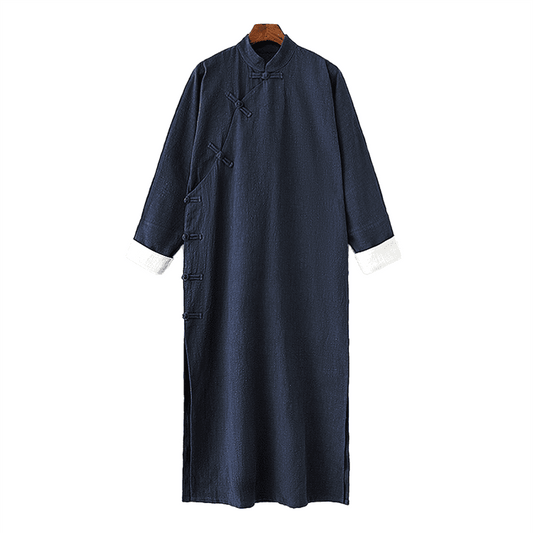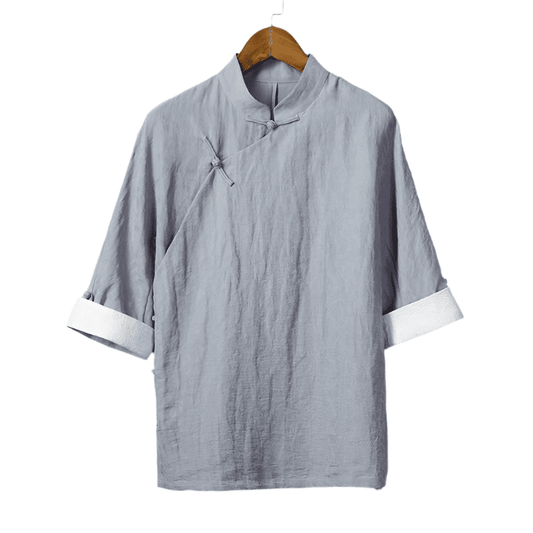Collection: Changshan
Changshan is a type of traditional Chinese long robe for men. It's written as "長衫" in traditional Chinese characters, and "长衫" in simplified Chinese characters. "Chang"("長/长") means "long" and "Shan"("衫") can boardly refer to clothing.
Changshan appeared in the Qing dynasty. It was the transformation of Tao robe, a popular outfit in the Ming dynasty. It kept the curve at the upper edge of the left front panel. Based on that, Changshan was added some Manchu elements. For example, Changshan became slimmer and more closely fitting. The closure type of Changshan changed from Tao robe's straps to buttons. The buttons started from the middle of the neck, went to the right and went along the right side of Changshan. And there were 2 slits rather than Tao robe's 4 on the hem of Changshan. In this period, people often wore a Magua (which then developed into the Tang jacket) over Changshan in daily life.
Changshan reaches to the feet and is in straight shape. Therefore, it looks decent and gentle, with the beauty of simplicity. That made Changshan became more common and popular, and was always regarded as the most formal outfit for men before it was replaced by the Zhongshan suit in 1950s.
Even now, domestic and overseas Chinese men still choose to wear Changshan to participate in traditional Chinese cultural activities.
You may also have heard of Cheongsam, it sounds very similar with Changshan. That's because they're actually one same thing. To make it simple, Changshan is men's Cheongsam, while Cheongsam is women's Changshan. It's hard to explain why they got different names during develpment. But they do have similar features, such as its full-length, oblique collar, button closure and the slits. The only difference is the cutting style. Changshan(for men) is more loose while Cheongsam(for women) is more fitted.

-
Changshan Robe
5.0 / 5.0
(2) 2 total reviews
Regular price $34.88Regular priceUnit price / per -
Solid Changshan Robe
5.0 / 5.0
(2) 2 total reviews
Regular price $114.88Regular priceUnit price / per -
Changshan Jacket
Regular price $94.88Regular priceUnit price / per -
Changshan Jacket with Vertical Buttons
Regular price From $104.88Regular priceUnit price / per -
Short Sleeve Changshan Shirt
5.0 / 5.0
(2) 2 total reviews
Regular price $28.88Regular priceUnit price / per -
Changshan Waistcoat
Regular price From $108.88Regular priceUnit price / per





